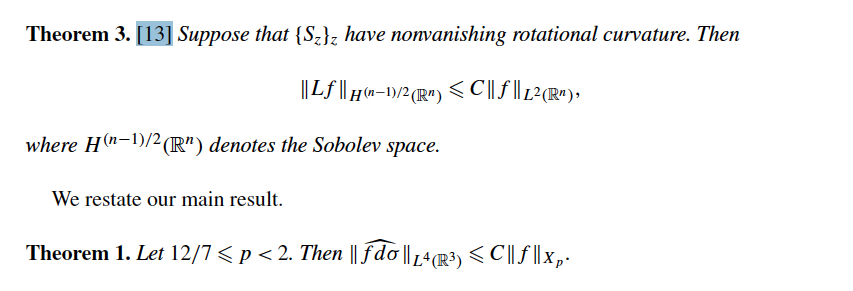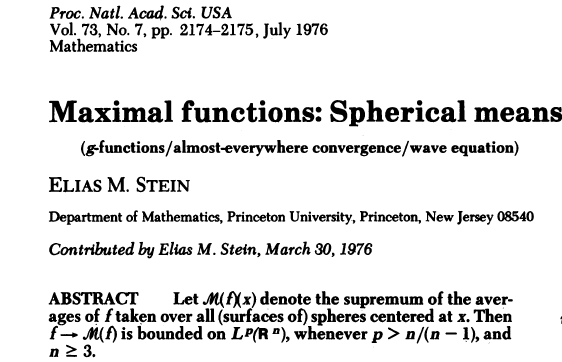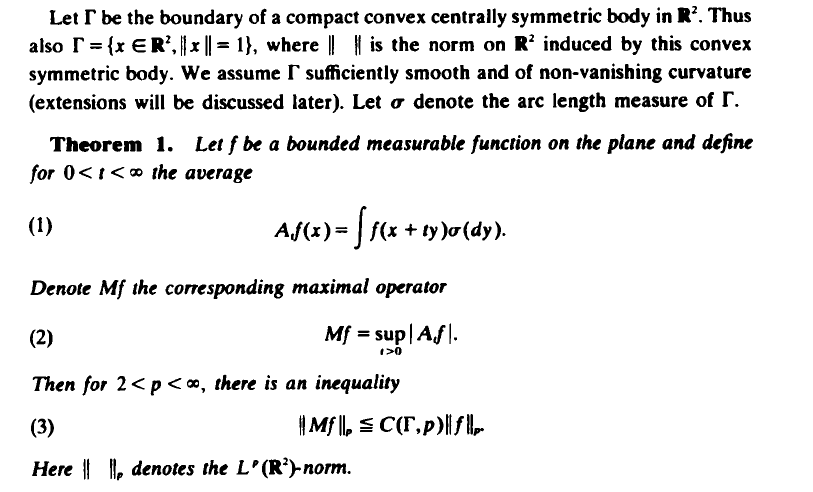
(MultiMarkDown Source Code generating this file)
Yesterday, Arthur Huang continued discussing the article of Rogers-Vargas establishing mass concentration for nonelliptic cubic NLS if blowup occurs. Like the antecedent work by Bourgain, this advance is based on refinements of the Strichartz inequality. There was some discussion in the seminar along this direction.
from as.huang@utoronto.ca to “J. Colliander” date Tue, Nov 2, 2010 at 5:43 PM
Hi prof,
Thank you for helping me clearifying several points in the seminar! Due to the lack of background, sometimes I thought I understood but in fact I haven’t really make a cristal clear sence of that… throughout this talk I really learned a lot! Especially what you explained about Sogge&Stein theorem pointed me a way to get much better understanding about integral operators.
Can you tell me exactly which book did you mean by Sogge? I hope to get a thorough understanding of that theorem.
Best, Arthur
The theorem quoted in RV and attributed to Sogge-Stein we discussed is:

If you really want to get into the background on this topic, I suggest you first learn
These papers are inspired by the classical study of the Hardy-Littlewood maximal operator which arises naturally in the study of differentiation properties of the Lebesgue integral. For a rapid discussion of that topic, one might consult the text book of Sogge. There is also a thorough discussion of this topic in the famous textbooks of Stein and Stein-Weiss.

Observe that this theorem only applies in demensions $n \geq 3$. This theorem was extended to $n = 2$ (using different ideas) by Bourgain in the mid-80s.

A flurry of activity, including the contributions of Sogge-Stein mentioned above, in harmonic analysis followed Bourgain’s work.